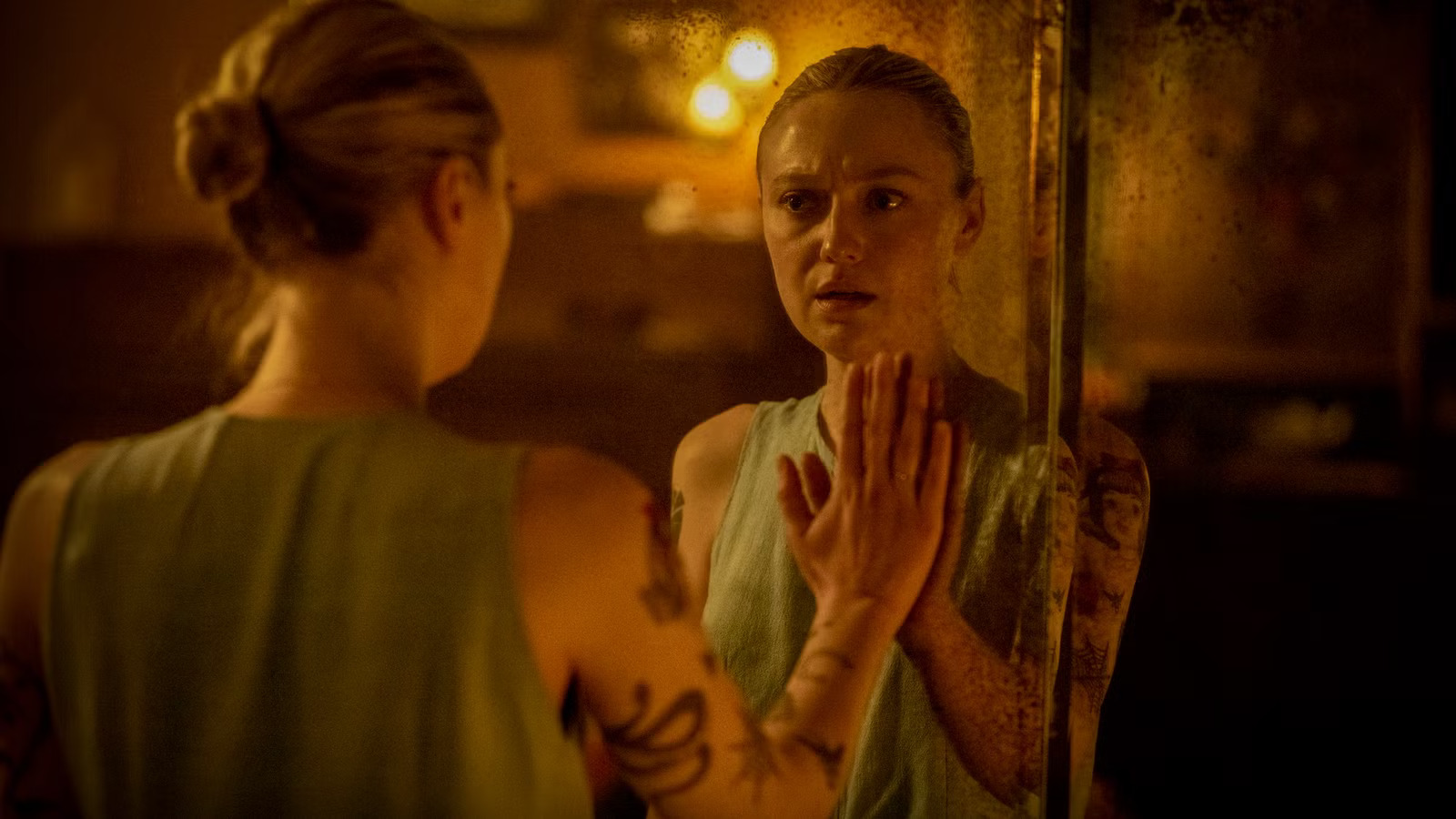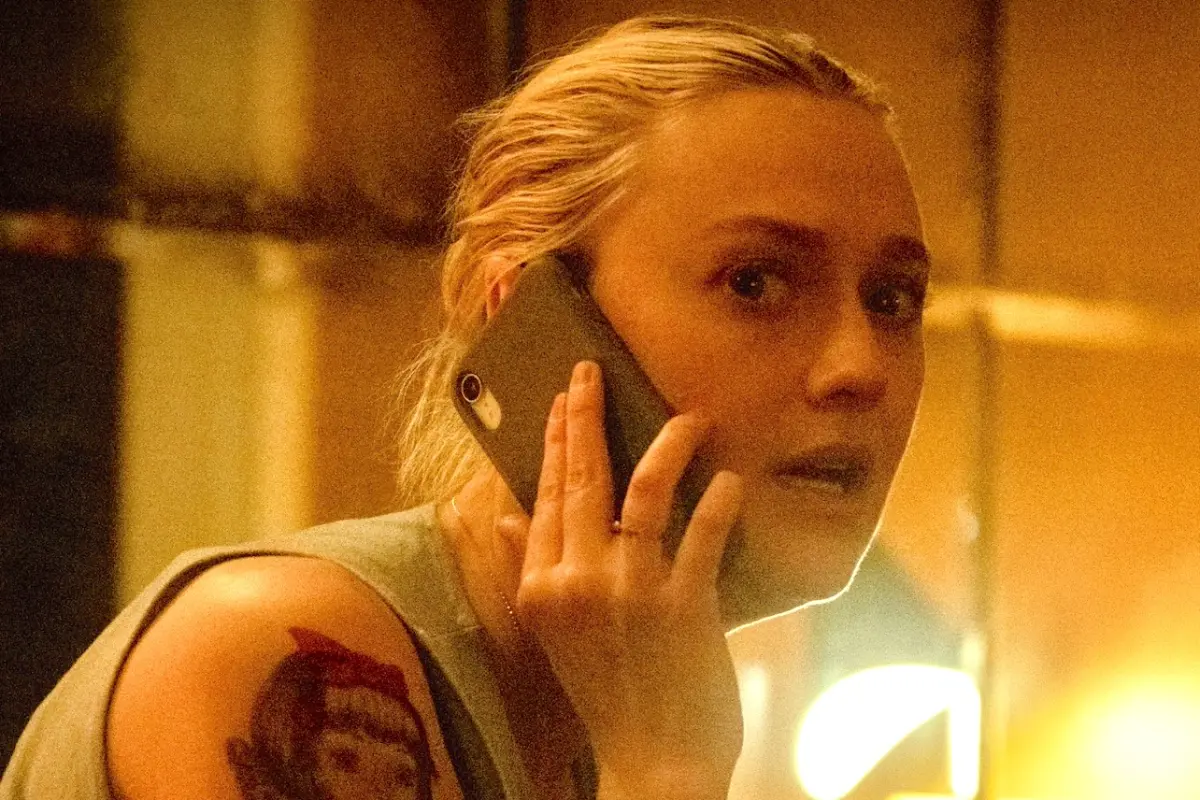Dakota Fanning continues her rise as a modern scream queen in the 2025 horror film Vicious, a Paramount+ original that began streaming earlier this month. The movie, written and directed by Bryan Bertino, who is best known for his 2008 thriller The Strangers, marks another entry into psychological horror for Fanning.
Vicious is a small-scale, home-viewing horror experience, combining suspenseful visuals with deeper themes of anxiety and emotional torment. Fanning stars as Polly, a young woman battling depression and anxiety who becomes the target of a terrifying supernatural curse. The cast also includes Mary McCormack, Rachel Blanchard, and Devyn Nekoda, adding depth and intensity to the story’s dramatic and frightening moments.
The plot centers on Polly, who lives alone in a large house and is trying to recover from a depressive episode while preparing for a graduate school interview. One night, she encounters a mysterious old woman, played by Kathryn Hunter, who delivers a wooden box and an hourglass to Polly, claiming that her life is in danger.
Although Polly initially dismisses the old woman, the curse begins immediately. From that moment, Polly is haunted by the box, which communicates with her using voices that mimic people she knows, including her family. This supernatural torment quickly escalates, transforming her home into a place of constant fear and psychological strain.
Polly Faces Escalating Box Demands, Fear, and Anxiety Affecting Herself and Others
The curse manifests through the box, which requires three items from Polly: something she hates, something she needs, and something she loves. Polly’s first attempt to satisfy the box by offering her pack of cigarettes fails because the box detects dishonesty. She then gives the box a cross necklace, which is accepted as the “hate” item due to her complex feelings following her father’s death. The box’s demands grow increasingly extreme, including instructions that lead to self-mutilation. The psychological tension shows how fear and anxiety can distort reality and force people into desperate and irrational actions.

Polly’s torment intensifies when the box begins impersonating her and targeting her loved ones. She discovers that her sister and niece have been attacked, leaving her devastated. In an attempt to fulfill the box’s final requirement, something she loves, Polly cuts a lock of her niece’s hair. Despite these sacrifices, the box’s demands continue, escalating her panic and fear. The film illustrates that yielding to fear does not end suffering but instead amplifies it. Polly’s struggle mirrors the relentless nature of anxiety and depression, showing how consuming and uncontrollable these mental states can feel.
Desperate to end the ordeal, Polly tries to pass the curse to a neighbor named Tara, believing this will stop the box from tormenting her. She gives Tara the box and leaves, but the curse continues, proving that transferring fear to others does not solve the problem. The old woman returns, still connected to the box, demonstrating that even those who pass it on remain affected. A final confrontation results in Polly killing the old woman in self-defense. The old woman explains that the box selects broken people and feeds on fear, reinforcing the movie’s theme that anxiety thrives on vulnerability.
Polly Confronts Fear Directly, Accepting Mortality While Anxiety Continues to Challenge Others
Following the old woman’s advice, Polly stops giving the box items and accepts the possibility of death, allowing the hourglass to empty. This act seems to lift the curse, and her sister and niece are revealed to be alive. The film concludes with ambiguity, showing that Tara has now been cursed by the box and committed violent acts. This ending emphasizes that fear and anxiety can persist in others if spread and that the struggle against such forces is ongoing. Polly’s survival depends on acceptance rather than control, highlighting the importance of facing fear without letting it dictate actions.
The box in Vicious serves as a metaphor for uncontrolled anxiety. Feeding the box, transferring it to someone else, or attempting to escape it does not end the problem. The only way to temporarily defeat it is to stop giving in to fear. Bertino drew on his own experiences with panic attacks to create the box as a physical representation of psychological pressure. By externalizing anxiety through supernatural horror, the film shows how fear can dominate perception and force people into harmful patterns until they confront it directly.
Bryan Bertino has emphasized that Vicious contains a sense of hope amid its dark themes, suggesting that complete escape from anxiety is impossible, but survival is achievable through acceptance and persistence. Polly’s final act of ignoring the ringing phone represents ongoing vigilance against fear rather than a permanent victory. The character of Tara illustrates the limits of influence, showing that people must face some challenges on their own. Ultimately, Vicious is as much about the psychological struggle of living with anxiety as it is a horror story, combining suspense with a cautionary tale about fear, control, and resilience.



